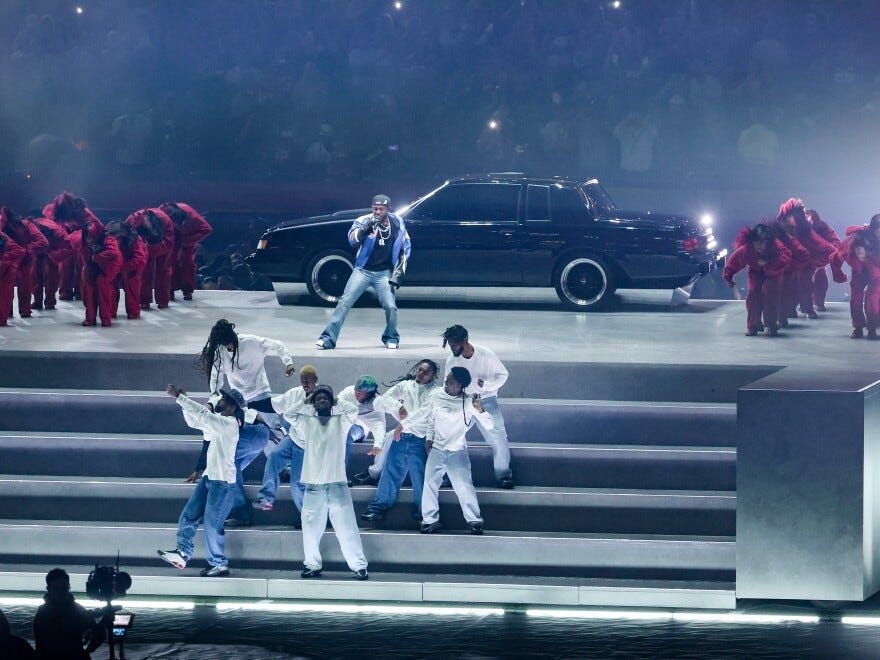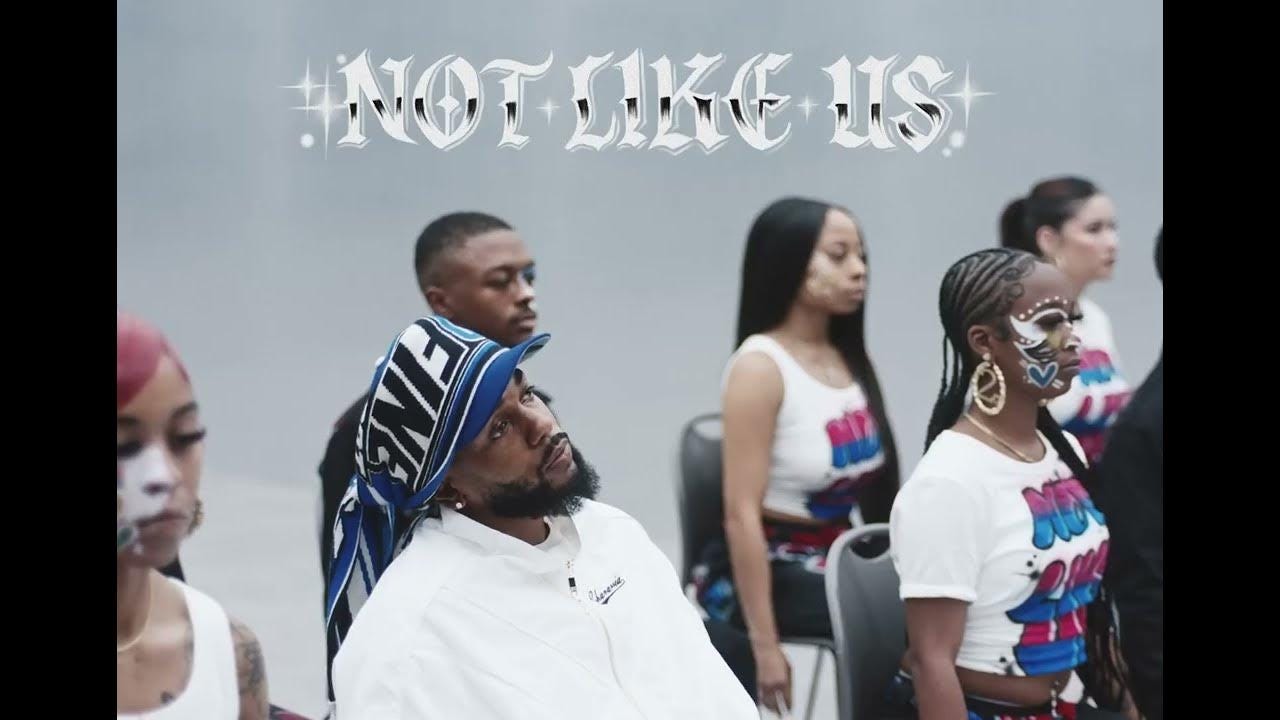Kendrick Lamar’s Super Bowl Performance, Explained
6 Key Takeaways to Understand Its Depth and Meaning
Kendrick Lamar isn’t just a rapper. He’s a Pulitzer Prize-winning storyteller known for his sharp lyricism, layered metaphors, and deep social commentary. His Super Bowl performance was no exception, packed with symbolism that requires the same level of analysis as great poetry or film. Let’s break down six key elements that made this performance unforgettable.
1. Uncle Sam-uel Jackson: More Than Just a Cameo
At first glance, Samuel L. Jackson’s appearance might seem like a fun, unexpected celebrity moment, but there’s a deeper meaning behind it. Jackson has long been a figure of resistance against racism and injustice in America. He grew up in the segregated South, where he experienced the harsh realities of school segregation firsthand. During his time in college, Jackson participated in a protest against racial inequality in the school’s curriculum. In one bold act of defiance, he held university administrators hostage in order to demand change—a move that got him suspended. His life is full of these moments of protest and activism, including his role as an usher at Martin Luther King Jr.’s funeral.
In the performance, Jackson plays the role of a commentator—dressed as the popular embodiment of the U.S., Uncle Sam—critiquing Lamar’s decisions like a coach in a high-stakes game. His presence symbolizes a mentor figure and ties into the larger theme: the ongoing struggle of Black Americans trying to navigate a game that’s rigged against them. Jackson’s authority and voice set the tone for the performance, showing that this is more than entertainment; it’s a powerful cultural critique.
2. “This is the Great American Game” – Life as a Video Game
Jackson’s opening line, “This is the great American Game,” introduces the central metaphor of the entire performance. If you pay close attention, you’ll notice that the set design is filled with symbols that mirror the buttons on a PlayStation controller. Lamar uses these symbols to compare his life and career to a video game. He’s playing “the game,” but the game represents life in America—a place where Black people are often forced to play by rules that are rigged to ensure they lose.
Throughout the performance, Jackson’s commentary offers critiques of how Lamar plays the game. This mirrors the real-world pressures on Black artists to conform to respectability politics and fit into a narrow definition of success. Initially, Lamar appears to be persuaded to play along with the game’s rules (by performing radio-friendly pop hits with SZA), but his defiance builds over time. The turning point comes when he delivers his hard-hitting diss track, Not Like Us, following a bold declaration: “40 acres and a mule, this is bigger than the music. They tried to rig the game, but you can't fake influence.” This line directly references the broken promise of reparations after the Civil War, when Black Americans were denied land they were promised. By rejecting the game’s rules, Lamar makes a statement about a system that was never designed to be fair in the first place.
3. The GNX Clown Car – A Symbol of the American Circus
One of the most visually striking moments in the performance is the scene with the clown car—a Buick GNX. This detail is far from random; in fact, it’s deeply personal to Lamar. GNX is the title of his most recent album, and the Buick GNX Regal holds special significance in his life. Released the same year he was born, the car represents both his personal history and a larger cultural moment. Lamar has even shared that when he came home from the hospital as a newborn, it was in a Buick Regal, with his father playing Big Daddy Kane on the stereo—a moment that fused his earliest experiences with hip-hop and family.
But the scene with the clown car goes beyond personal nostalgia. The American flag-themed performers emerging from a clown car create a biting critique of America’s political and social landscape. It’s a visual statement on the absurdity and chaos of the country’s treatment of Black Americans, who are often forced into the roles of entertainers or spectacles. The scene blurs the line between political commentary and performance art, reinforcing the idea that America itself is an elaborate, often ridiculous game.
4. “The Revolution Will Be Televised” – Flipping the Narrative
In a powerful moment, Lamar references the iconic poem “The Revolution Will Not Be Televised' by Gil Scott-Heron”. In Scott-Heron’s poem, he argues that true social change happens behind the scenes, in grassroots communities, not in front of TV cameras. Lamar takes this idea and flips it, declaring that his revolution is televised on the world’s biggest stage, the Super Bowl. His very presence in this moment is an act of defiance and power, bringing the revolution into living rooms across the globe.
At the same time, Lamar warns those who might underestimate him, saying, 'You picked the wrong guy.' This phrase is instantly recognizable to many in Black communities as a taunting declaration of strength, similar in tone to the phrase 'FAFO' (f*** around and find out). It’s a bold statement that reminds his audience and his critics that he won’t be silenced, no matter how powerful his opponents are.
5. Serena Williams – A Legendary Cameo with LA Roots
Another major guest appearance is tennis legend Serena Williams, who brought her signature energy to the stage. But her cameo wasn’t just about star power, it was layered with cultural meaning. Williams wore an all-blue outfit and briefly performed a C-walk, also known as the Crip Walk. This dance originated as a gang ritual in Los Angeles but has since evolved into a popular dance among the Black community especially in Compton, where both Serena and Kendrick are from.
This isn’t the first time Williams has done the dance. In 2012, she performed a C-walk after winning Olympic gold, which caused some controversy. This time, however, she fully leaned into it, joking backstage, “Man, I did not Crip Walk like that in Wimbledon. Ooo! I would’ve been fine!” Her cameo also connects to Lamar’s diss track, Not Like Us, where the C-walk features prominently in the music video. And if that weren’t enough shade, Williams also happens to be one of Drake’s exes, adding another layer of petty brilliance to her appearance on the same stage as SZA, another of Drake’s former flames.
6. Not Like Us – The Ultimate Power Move
The performance builds toward the moment fans weren’t sure would happen: Lamar performing his diss track Not Like Us, a brutal critique of Drake. The song focuses on the cultural differences between the two artists. While Lamar’s music is rooted in authentic experiences from his life in Compton, Drake’s background as a Canadian child actor has often been criticized as manufactured. Lamar calls out the inauthenticity, drawing a line between real hardship and the persona Drake presents in his music.
The lyrics of Not Like Us also include serious allegations, hinting at Drake’s involvement in predatory behavior—an issue that has led to ongoing legal battles. Many fans assumed Lamar wouldn’t be able to perform the song due to these lawsuits. Lamar even teased the possibility beforehand, saying, “You know they like to sue.” But he went ahead anyway, lighting up the crowd when he hit the infamous “A minor” line. His lowercase "a" chain seemed to be a subtle reference to that lyric, adding another layer of meaning to an already powerful moment.
Setlist
If you wanted to know all of the songs played during the performance, here they are:
"Bodies"
"Squabble Up"
"HUMBLE."
"DNA."
"Euphoria"
"Man at the Garden"
"Peekaboo"
"Luther" (featuring SZA)
"All the Stars" (featuring SZA)
"Not Like Us"
"TV Off" (featuring Mustard)











Brilliant analysis.